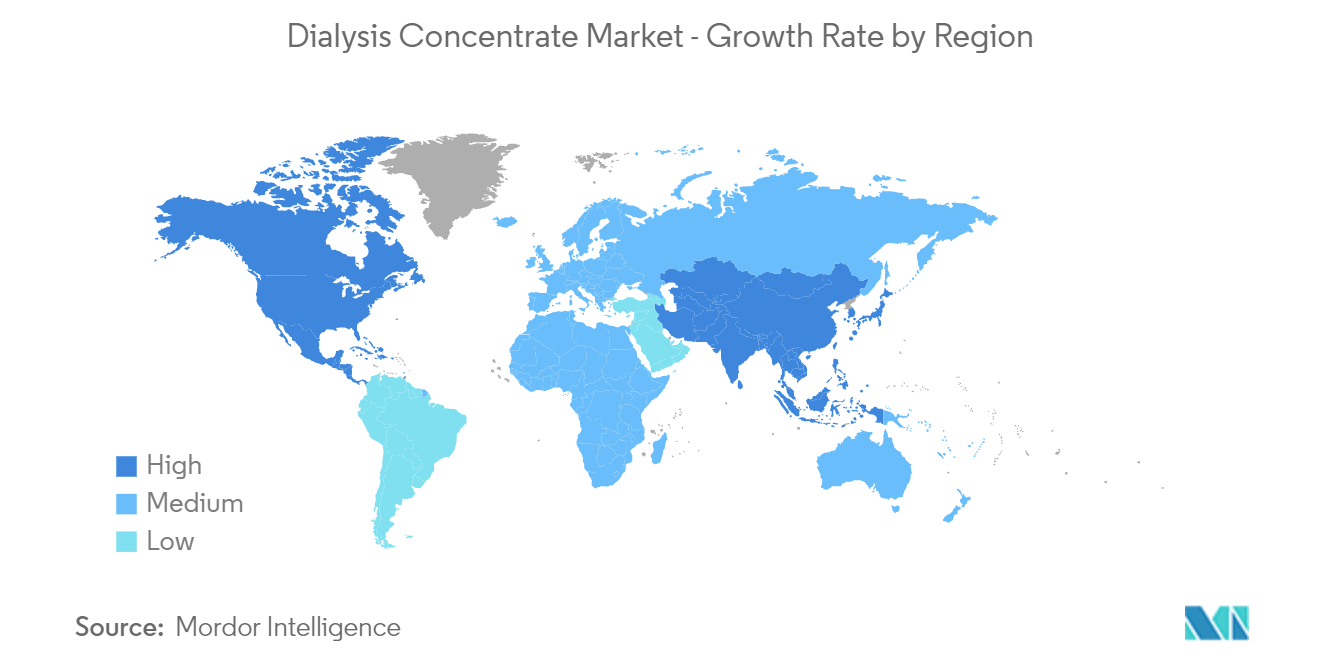Market Trends of Global Dialysis Concentrate Industry
This section covers the major market trends shaping the Dialysis Concentrate Market according to our research experts:
Hemodialysis Segment Expects to Drive the Market Growth
The factors driving the growth of the hemodialysis segment are increasing incidences of hypertension and diabetes, which leads to kidney failure, a rising number of patients with kidney disease, and a shortage in the availability of kidneys for transplants.
The rising number of geriatric population suffering from kidney diseases will likely boost the demand for the hemodialysis segment over the forecast period. According to the statistics published by the Centers for Disease Control, in 2021, 38% of people aged 65 years or older are at high risk of developing chronic kidney disease, 12% in people 45-64 years of age, and 6% in people aged 18-44 years.
Additionally, various technological innovations, government initiatives, and the introduction of compact-sized machines that can be conveniently used for home-based treatments significantly boost the demand for the hemodialysis segment. For instance, in March 2022, in India, Safdarjung Hospital set up a new unit with two hemodiafiltrations (HDF) machines, which help patients better purify kidneys during dialysis. In December 2020, Medtronic launched a dialysis machine for neonatal and pediatrics in the United States. Similarly, in October 2020, the United States-based privately held medical device company, Diality, invested around USD 12.5 million in developing a portable hemodialysis system to address the unmet technology needs of the evolving dialysis industry. Thus, the high burden of kidney disease is increasing the demand for hemodialysis, thereby contributing to the market's growth.

North America is Expected to Have the Significant Market Share
The rising incidence of kidney diseases such as end-stage renal disorder (ESRD), chronic kidney disease, and acute kidney injury are expected to drive the demand for hemodialysis. According to the statistics published by the National Institute of Diabetes and Digestive and Kidney Diseases, in September 2021, about 786,000 people in the United States are living with an end-stage renal disorder (ESRD), with 71% of the people are on dialysis, and 29% with a kidney transplant. According to the same source, nearly 500,000 Americans are affected by polycystic kidney disease (PKD), an inherited kidney disorder. According to the United States Organ Procurement and Transplantation Network, in August 2021, 22,817 kidney transplants were completed in the United States. In addition, 90,201 people were on the waiting list for a kidney transplant in the United States as of August 2021.
The incidence of chronic kidney disease is more common in females than males. According to the statistics published by the Centers for Disease Control updates from July 2021, 15% of adults in the United States are expected to have chronic kidney disease. In addition, slightly more common in women (14%) than men (12%).
Moreover, the research development initiatives and development of machines with advanced technology are also contributing to the growth of hemodialysis, further increasing the demand for dialysis concentrate in the region. For instance, in December 2020, Medtronic launched a dialysis machine for neonatal and pediatrics in the United States. Also, in January 2021, Quanta Dialysis Technologies Ltd, a British medical technology pioneer developing innovative dialysis products and services, received 510(k) clearance from the United States Food and Drug Administration to market its small and simple, high-performance hemodialysis system SC+ in the United States.
Thus, growing kidney disease cases and increasing development in the dialysis segment in the region are expected to boost the dialysis concentrates market growth in the coming years.


